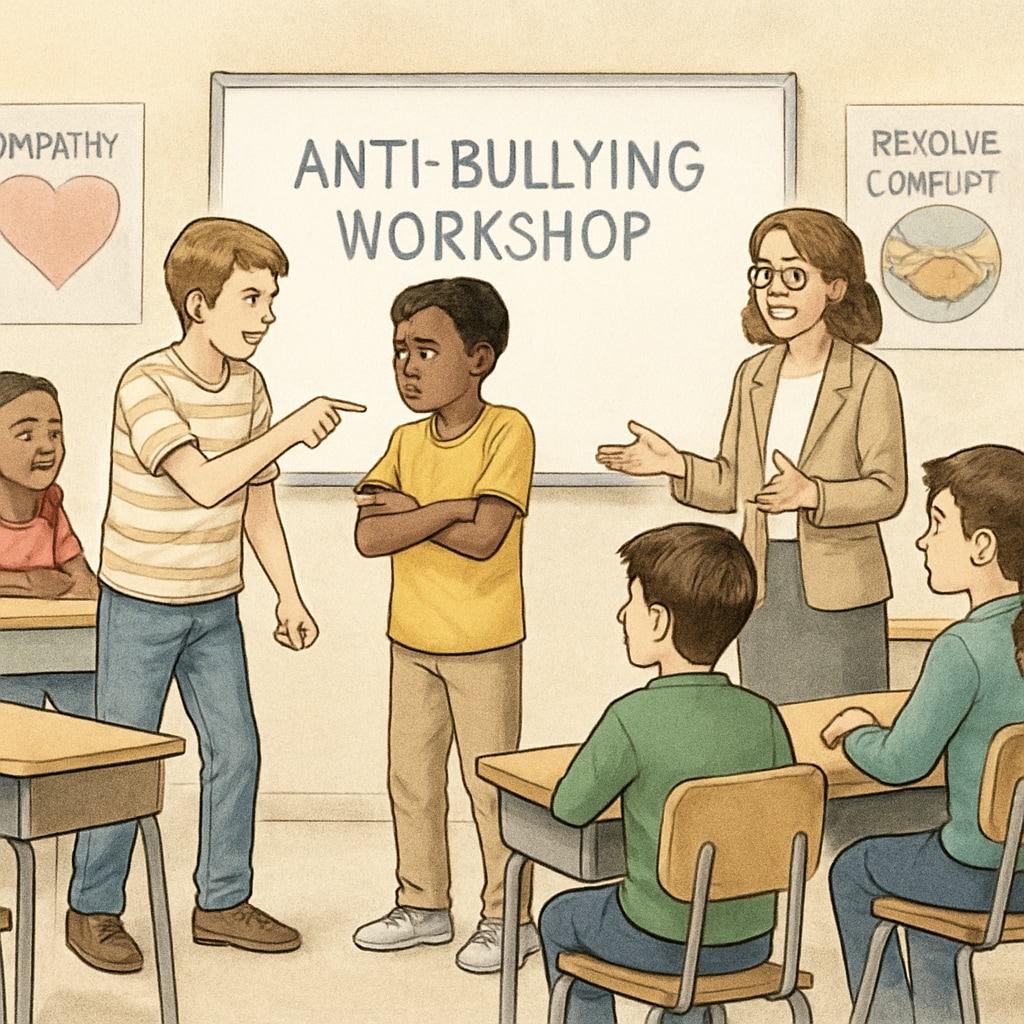School bullying, management strategies, and consequence mechanisms are pressing concerns in today’s educational landscape. Bullying in schools affects not only the victims but also the perpetrators and the larger school community. To address this issue effectively, it is essential to define clear boundaries that distinguish bullying from ordinary conflict and implement multi-tiered intervention strategies that focus on both education and accountability.
Defining the Boundaries of School Bullying
One of the greatest challenges in tackling school bullying is identifying it correctly. Bullying differs from normal peer conflict in its repetitive nature, intentional harm, and power imbalance. According to Wikipedia’s definition of school bullying, it involves physical, verbal, or emotional aggression that occurs repeatedly over time and targets individuals with less power or social standing.
To ensure clarity, schools should establish detailed guidelines that help teachers, parents, and students identify bullying behavior. These guidelines should address:
- Repetition: Is the behavior recurring or a single incident?
- Intent: Is the harm deliberate or accidental?
- Power imbalance: Does one party hold more social, physical, or psychological power?
By clearly defining these criteria, schools can differentiate between bullying and isolated conflicts, allowing for more targeted interventions.

Effective Strategies for Managing School Bullying
Once bullying is identified, schools must adopt effective management strategies. These strategies should aim to protect victims, hold perpetrators accountable, and foster a positive learning environment. Key approaches include:
- Educational programs: Anti-bullying workshops and social-emotional learning curricula can teach students empathy, conflict resolution, and the impact of bullying.
- Zero-tolerance policies: Clear rules and consistent enforcement signal to all students that bullying is unacceptable.
- Support systems: Providing victims with access to counselors and peer support groups can help them recover emotionally.
- Restorative practices: Programs that encourage dialogue between victims and perpetrators can promote understanding and accountability.
Schools should also encourage bystander interventions, empowering students who witness bullying to report incidents and support victims. For example, the Britannica article on bullying highlights the importance of creating a culture where students feel safe speaking up.

Constructing Educational Consequence Mechanisms
When addressing bullying, punitive measures alone often fail to create meaningful change. Instead, schools should implement educational consequence mechanisms that provide perpetrators with opportunities for growth and reform. These mechanisms can include:
- Behavioral intervention plans: Tailored plans to help students understand and change their actions.
- Mentorship programs: Pairing perpetrators with mentors who can guide them in developing healthy relationships.
- Community service: Requiring students to contribute positively to their school or local community as a form of restitution.
- Mediation sessions: Facilitated discussions between victims and perpetrators to promote understanding and resolution.
Educational consequence mechanisms not only protect victims but also address the root causes of bullying, helping perpetrators develop the skills and empathy needed to avoid future harm. As a result, these approaches benefit the entire school community.
Conclusion: Building a Safer and More Inclusive School Environment
School bullying continues to challenge educators and administrators worldwide. By clearly defining boundaries, implementing effective management strategies, and constructing educational consequence mechanisms, schools can create environments that prioritize safety, empathy, and growth. Addressing bullying is not just about discipline—it’s about fostering a culture where every student feels valued and supported.
As schools refine their approaches to bullying, collaboration between educators, parents, and policymakers will be essential. Together, we can work toward a future where every child has the opportunity to thrive in a safe and inclusive educational environment.
Readability guidance: This article uses short paragraphs, clear lists, and active voice to enhance readability. Transitions like “however,” “in addition,” and “as a result” provide flow between ideas, ensuring the content is engaging and easy to follow.


